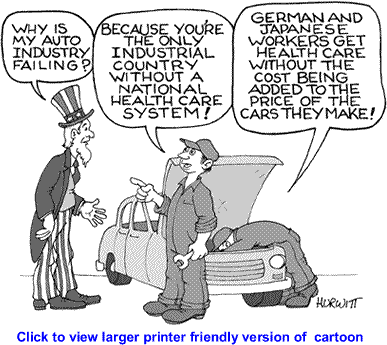by Lucia Kurekova
Roma minority is among the most populous and the most problematic in the East-Central European countries (CEE). In spite of various work activation attempts and welfare tightening efforts implemented by the CEE governments in the near past, Roma population has largely remained out of the labor force. This has been so in spite of buoyant labor markets and vast labor shortages which were troubling domestic and foreign-owned employers. Logically, in the situation of high labor demand caused both by successful and rampant economic growth as well as by high rates of out-migration of human capital from CEE to the UK and Ireland, one would expect improved possibilities of employment even for those alienated from the labor markets during the periods prior to the EU accession, such as Roma.
While Roma are certainly among the disadvantaged (largely due to their educational and skill levels) and discouraged (not looking for work) workers, hard data about the extent and the character of their joblessness are scarce. Quantitative information about Roma in CEE which would be comparable to the majority population is nearly non-existent. This is so largely due to the push for political correctedness among the EU and other international authorities on the Roma issue which has in turn illegitimized the inquiries on Roma ethnicity in survey questions. Equally scarce is the estimation of the possible impact of various policies and labor market developments on Roma social inclusion or exclusion.
To fill the gap in data about their Roma citizens and to understand better the forms and channels of Roma labor market exclusion, the Czech government together with the World Bank carried a unique research project in order to estimate how Roma fare in the Czech labor market and to determine labor market barriers in their complexity. The Czech Roma World Bank study in my view breaks down a number of stereotypes, re-iterates some of the hunches which have not yet been robustly empirically confirmed, offers a complex assessment of the problem and – most importantly - a series of rather provocative policy recommendations.
On the basis of comprehensive survey carried out in the marginalized localities and targeted at the Roma, the Report finds – perhaps unsurprisingly – that Roma living in marginalized communities in the Czech Republic continue to face severe and multiple forms of labor market exclusion. The empirical findings put forward nuanced evidence on the multifaceted nature of Roma labor market marginalization. Starting with pointing out that Roma situation surpasses the categories of employment versus unemployment and moves to the arena of discouragement (not searching for work), the survey confirms that Roma suffer from low educational attainment. Leaving aside the reasons for this outcome, it has been found that majority of the Roma lack even basic functional and numerical literacy which in effect makes them absolutely unsuitable for the knowledge-biased new employment opportunities emerging in the CEE economies. These facts are complemented by strong gender and generational aspects to Roma labor market exclusion. While a good share of Roma men are employed (mostly in precarious and casual jobs), this is hardly the case for Roma women. Most strikingly, the survey results have revealed a strong generational dimension of the problem – there is a mounting evidence of the worsening of educational attainment and a significant downward mobility among Roma raised during transition.
Drawing Roma into education and into employment – the goals that the governments in the region have been trying to follow – scores again as a clear first-hand solution to the problem: the level of educational attainment, acquired skills and previous on-the-job experience predict well the success of Roma on the Czech labor market. In the Czech case, literacy and numeracy skills increase the probability of employment by a factor of two. If we seem to know where the solutions lie, the question emerges why have the attempts seen only very limited success so far?
The World Bank suggests that the culprit should be sought in (lack of) the quality and targetedness of the policy interventions aimed at Roma. To be precise, the limitations stem from the fact that the policies and approaches aimed at employment activation and labor market inclusion have not been sufficiently aimed at Roma. The policies have failed to recognize multifaceted nature of their distance from the labor market (lack of skills, welfare trap, heavy indebtedness, mismatch between jobs and skills, other labor market barriers) and to individualize the employment services. Welfare adjustments and public works program have not proven effective in providing longer-term solutions and bringing Roma out of poverty trap into labor market. The World Bank calls for a more balanced policy activation approach based not only on the responsibilities of job seekers but also on enhanced performance of the Labor Offices which need to focus on client profiling, integration of services in order to address multiple disadvantages, more culturally sensitive provisions and the introduction of performance measurement and evaluation of public servants. The policy adjustments further call for an enlarged partnership with private and NGO sectors and the enhanced focus on the next generation of Roma youth.
The fact that the recommendations coincide both in timing and in content with the basic principles and interests of the EU structural funds allocation is very good news for the CEE governments.
Reference:
Czech Republic: Improving Employment Chances of the Roma. Report No. 46120 CZ, The World Bank. October 2008.
Dec 22, 2008
On Roma minority in East-Central Europe: From Political Correctedness to Balanced Employment Activation Approach
Dec 18, 2008
What does Varieties of Capitalism have to say about the bailout of the U.S. auto industry?
By Kristin Makszin
The different perspectives on whether or not to bailout the U.S. auto industry vary according to the alleged cause of the ‘crisis’ for the auto industry. Was this crisis caused by recent economic events (i.e. financial crisis, fall in consumption), bad decisions by the big three company leadership over time (producing SUVs, not fuel efficient automobiles), burdens of health and pension commitments to retired auto workers (a result of organized labor), political decisions, unstable oil prices, …?
Obviously there are multiple reasons why the auto companies are in the situation that they are currently in. But the problems in the U.S. auto industry are not new. Arguably, the current challenges are a continuation of a thirty year story – or perhaps an even longer one. The many events on this thirty year time line suggest that the U.S. auto industry is fragile. Which raises the question: can it be saved? And what would it take to save it?
Analysis of the current situation of the U.S. auto industry emphasizes the importance of the political and economic institutions that form the context in which businesses are embedded. Auto production began to move away from Detroit (to other countries and even other parts of the USA)—many argue—because of the high level of organization of auto workers in Detroit. But the decline of the auto industry in Detroit was also assisted by shifts in the global economy that allowed car production to increase in other parts of the world (the U.S.A. lost its comparative advantage in car production). Further the big three auto producers (GM, Chrysler, Ford) fell behind in the newest and most important innovation: greener cars. The reason that the U.S. auto industries fell behind in the ‘greening’ process could be blamed on the decisions of company executives, the American consumer, U.S. foreign policy, … But it is clear that NOW is time for the auto industry to innovate and the big three are already behind. According to the Varieties of Capitalism (VoC) framework, the U.S. economy relies on complementarities between deregulated labor markets, innovative product markets, competitive relationships between firms, a financial system where firms raise money from equity markets, and an educational system promoting general skills. The auto industry seems to be the exception to the liberal market economy framework. The strength of labor is impossible to ignore, thanks to the United Auto Workers. It would be hard to describe anything that happened in Detroit in the last 30 years as a part of innovative product markets. The big three have formed a ‘cooperative’ relationship in begging for the bailout. From a Varieties of Capitalism perspective, it does not seem surprising that the U.S. auto industry could not survive without the complementary institutions. Now that the equity-based financing is not sufficient and the executives of the big three (and many others in Detroit) argue that government funding should be used to keep these business alive-- because they are "too big" to fail.
According to the Varieties of Capitalism (VoC) framework, the U.S. economy relies on complementarities between deregulated labor markets, innovative product markets, competitive relationships between firms, a financial system where firms raise money from equity markets, and an educational system promoting general skills. The auto industry seems to be the exception to the liberal market economy framework. The strength of labor is impossible to ignore, thanks to the United Auto Workers. It would be hard to describe anything that happened in Detroit in the last 30 years as a part of innovative product markets. The big three have formed a ‘cooperative’ relationship in begging for the bailout. From a Varieties of Capitalism perspective, it does not seem surprising that the U.S. auto industry could not survive without the complementary institutions. Now that the equity-based financing is not sufficient and the executives of the big three (and many others in Detroit) argue that government funding should be used to keep these business alive-- because they are "too big" to fail.
Some Republican Senators (among others) have suggested that part of the bail out should demand pay cuts from the United Auto Workers and that innovation should be forced towards a more environmentally friendly car. Interestingly, the Republican Senators are addressing two other dimensions of the auto industry that seem to be mismatched with the liberal market economy capitalism that is predominate in the USA. But, from the lens of the varieties of capitalism framework, it is clear that the bailout package (even with all potential additional stipulations) would be incapable of making the auto industry work in the absence of complementary institutions. So perhaps it is time for Schumpeterian ‘creative destruction’ in Detroit.
From the streets of Detroit, the need for a bailout for the auto industry is clear. Too many lives and companies depend on it. If the big three are allowed to go bankrupt, Detroit will suffer and there will likely be strong ripple effects. But it seems clear at this point, a short term bailout is not enough. Drastic changes will be needed if the auto industry will survive in Detroit. If the big three stand a chance, they must use the advantages of their (supposed) institutional context to be the leaders in innovation towards greener cars. But it might already be too late. The only thing that seems certain for Detroit is that everything will change. Either the big three automakers will face real reform or they will continue their slow descent until U.S. auto production is only a memory.
The effects of this for Detroit are clear. But what will this mean for automakers in Europe and Asia?



